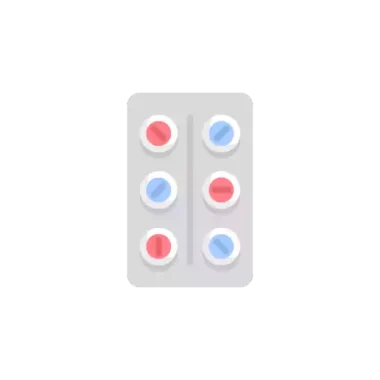Composition Benzyl Nicotinate (3mg) + Heparin (50IU)
Rx
Pack tube of 15 gm Cream
Storage Store below 30°C
Chemical Class
Action Class
Habbit Forming No
Manufacturer Biological E Ltd
Manufacturer address Biological E. Limited, Road No. 35,Jubilee Hills, Hyderabad, Telangana -500033

Beparine Cream
Beparine Cream is a combination of two medicines used to treat superficial thrombophlebitis (inflammation or swelling of a vein due to a blood clot). It helps to relieve pain and inflammation by speeding up the healing process.
Basic Info
Description
Beparine Cream is also used to treat bruises and hematoma (collection of blood under the skin). It speeds up the dissolution of the blood clot, decreasing the pain and swelling. It should be used in the dose and duration as advised by your doctor. This medicine is for external use only. The affected area must be clean and dry before applying this medicine. Make sure to wash your hands before and after applying this medicine.
Beparine Cream is generally safe to use with minimal or no side effects. However, slight irritation, burning sensation or redness may be experienced after applying this medicine over the affected area. This is usually temporary and resolves on its own. Please consult your doctor if it does not subside or persists for a longer duration. Avoid contact of this medicine with broken skin. If you get it in your eyes, mouth or broken skin, rinse thoroughly with plenty of water.
Uses
Treatment of Thrombophlebitis
How To Use
This medicine is for external use only. Use it in the dose and duration as advised by your doctor. Check the label for directions before use. Clean and dry the affected area and apply the cream. Wash your hands after applying, unless hands are the affected area.
MOA
Beparine Cream is a combination of two medicines: Benzyl Nicotinate and Heparin. Benzyl Nicotinate is a vasodilator and Heparin is an anticoagulant. Together, they work by widening the blood vessels and dissolving/ preventing the formation of blood clots. This increases blood flow to the affected area thereby relieving the associated symptoms.
What If
If you miss a dose of Beparine Cream, apply it as soon as possible. However, if it is almost time for your next dose, skip the missed dose and go back to your regular schedule. Do not double the dose.
Drug Tips
Beparine Cream should be used as per dose and duration suggested by the doctor.
Apply it on the affected area as instructed by your doctor.
Wash your hands properly with soap before and after applying the medicine.
Avoid contact with the eyes, mouth, nose or any mucous membrane and rinse thoroughly in case of accidental contact or seek medical help in case of ingestion.
It makes your skin more sensitive toward sunlight. Apply sunscreen or wear protective clothing while going out.
Faqs
Q. What conditions does Beparine Cream treat?
Beparine Cream is used to treat thrombophlebitis, it is a condition in which presence of blood clot causes inflammation or swelling of a vein. When applied to the affected area, Beparine Cream penetrates the skin to help reduce inflammation and pain, and aid faster healing.
Q. Can Beparine Cream be stopped when my symptoms are relieved?
Beparine Cream is usually used for short term and can be discontinued when the symptoms are relieved. However, Beparine Cream should be continued if the doctor has advised to do so.
Q. What are the precautions I need to follow while using Beparine Cream?
It is important to know that Beparine Cream is for external use only. Do not apply close to the eyes, mouth, nose, or any cut, broken, or burned skin. In some patients, use of this medicine causes increase in sensitivity to UV rays. It is recommended to avoid the exposure to direct sunlight as much as possible. If it is unavoidable to expose yourself to sunlight then wear as much protective clothing as possible and use sunscreen.
Q. What is the storage condition for the Beparine Cream?
Keep this medicine in the container or the pack it came in, tightly closed. Store it according to the instructions mentioned on the pack or label. Dispose of the unused medicine. Make sure it is not consumed by pets, children and other people.
Benifits
In Treatment of Thrombophlebitis
Thrombophlebitis is an inflammatory process in which a blood clot forms and blocks one or more veins, usually in your legs. Beparine Cream is a combination of medicines that is used to treat thrombophlebitis near the surface of your skin. It dissolves the clots and also relieves pain and inflammation by increasing the blood flow. This improves the overall healing process.Use it as advised by the doctor to get maximum benefit. The condition usually improves on its own in sometime. However, your doctor might recommend applying heat to the painful area, elevating the affected leg, using an over-the-counter painkiller and possibly wearing compression stockings.
Side Effects
Most side effects do not require any medical attention and disappear as your body adjusts to the medicine. Consult your doctor if they persist or if you’re worried about them
Application site reactions (burning, irritation, itching and redness)
Safety Profile
Alcohol:
No interaction found/established
Pregnancy:CONSULT YOUR DOCTOR
Information regarding the use of Beparine Cream during pregnancy is not available. Please consult your doctor.
Breast feeding:CONSULT YOUR DOCTOR
Information regarding the use of Beparine Cream during breastfeeding is not available. Please consult your doctor.
Driving:
No interaction found/established
Kidney:
No interaction found/established
Liver:
No interaction found/established
Refferences
Fox KA, White HD, Gersh BJ, et al. Antithrombotic Agents: Platelete Inhibitors, Acute Anticoagulants, Fibrinolytics, and Chronic Anticoagulants. In: Opie LH, Gersh BJ, editors. Drugs for the Heart. 8th ed. Philadelphia, Pennsylvania: Elsevier Saunders; 2013. pp. 332-397.
Majerus PW, Tollefsen DM. Blood Coagulation and Anticoagulant, Thrombolytic, and Antiplatelete Drugs. In: Brunton LL, Chabner BA, Knollmann BC, editors. Goodman & Gilman’s: The Pharmacological Basis of Therapeutics. 12th ed. New York, New York: McGraw-Hill Medical; 2011. pp. 1467-1488.
Zehnder JL. Drugs Used in Disorders of Coagulation. In: Katzung BG, Masters SB, Trevor AJ, editors. Basic and Clinical Pharmacology. 11th ed. New Delhi, India: Tata McGraw Hill Education Private Limited; 2009. pp. 587-603.






